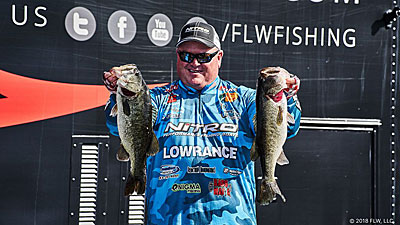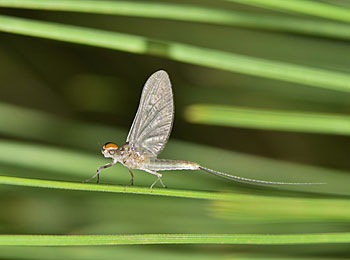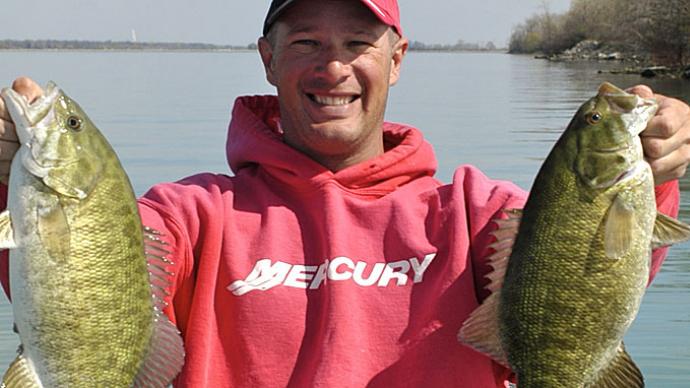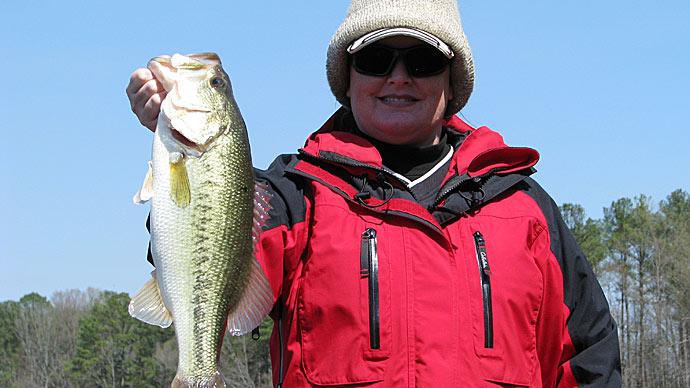
This particular stretch of shoreline didn’t appear much different than others along the South Carolina reservoir’s main tributary. Its bottom was sandy. The depth was shallow. Tree branches stretched over the water’s surface, casting some shade but still high enough to allow a lure to be skipped underneath. That last characteristic was important because there were plenty of bass holding under them.
Why those bass chose this spot wasn’t evident at first. It was the middle of June, and it could have been a stopover as they swam to the main river from spawning spots in a nearby backwater. But it wasn’t until my lure bumped one of the branches during an errant cast that the attraction became apparent. The collision caused winged insects to fall from the branch to the water’s surface. There they were devoured by fish, which left only a tiny swirl where each bug had been.
The insects were mayflies, whose regional names include fishflies, sandflies, and drakes. Long honored as important hatches by trout anglers, the arrival of the winged versions of mayflies brings excellent bass fishing, too. “They’re the first link of the food chain,” said FLW Tour angler Shane Lineberger, who always keeps an eye open for hatches while on the water. While bass eat mayflies, they are a favorite food of bluegill, bream, white perch, and other small fish. “And big fish eat little fish,” he said.
Meet the mayfly

There are about 700 species of mayflies in the U.S. and Canada, most recognizable by their sizeable upward-pointing wings, curved bodies, and thread-like tails. Water is essential in their lifecycle, so it is found in most streams, rivers, and lakes. They are sensitive to pollution, so their presence indicates good water quality.
Despite their name, very few mayflies hatch during May. Instead, the first hatches are in late spring — early June — and continue through fall. That’s because they are triggered by water temperature, happening once it’s warm enough. Once they hatch, female mayflies mate and deposit thousands of eggs on the water’s surface. They sink to the bottom, where they hatch in about 90 days.
The larval or nymph stage can last up to three years, depending on the species. During that time, they crawl along the bottom, hiding, eating, and waiting until it's time to become an adult. Some emerge on the bottom, some crawl onto a dry surface, such as a shoreline rock or dock, and others emerge while floating on the water’s surface. Once they emerge, they take flight from a few hours to a few days, mating and starting the cycle again before dying.
While fish, including bass, eat some larval mayflies, most are devoured when they emerge from the water during those precious moments.
When and where you’ll find them
Lineberger’s name is well-known in local and regional tournament circles around his home near Charlotte, N.C. He’s found fishing success on the national stage, climbing through the B.A.S.S. Opens to qualify for the Bassmaster Elite Series and now on the FLW Tour. While compiling that experience, he’s developed strategies for catching bass during seasonal happenings, including mayfly hatches.
Lineberger expects to see Carolina mayflies begin hatching when summerlike weather arrives, usually about midway through June and continuing through the first part of July. It can be a basic post-spawn pattern, especially when targeting largemouth bass. “It’s all about finding out where it’s happening,” he said. “All it takes is a couple. You’re not going to see a couple hatching. There will be a wad of them.”

Discovering a hatch only requires observation. Lineberger suggests keeping your eyes open when you launch your boat in the morning. You may see a few flying around while walking from your truck to the dock. Look for newly hatched mayflies sitting on your boat or stuck in the cobwebs that form around dock posts. When they took to flight, you may see their casings, left behind on the water’s surface, washed up on the ramp or along the shore.
Lineberger finds most mayfly hatches on Southern reservoirs in tributaries, especially the main river. He said they’re nearly always along banks with a soft bottom of mud, silt, or sand. But not all of those are equally attractive to the insects. Adding overhanging trees or docks gives adult mayflies a place to land after emerging and cover for fish to hold while feeding on them.
If you find mayflies clinging to overhanging trees but not much bass action below, there is a way to jumpstart the fishing. Lob a cast into the overhanging limbs, shaking your rod until your lure grabs one. Then while keeping a taut line, start moving your rod back and forth, like you’re setting the hook in slow motion. That will shake the tree, causing some mayflies clinging to it to drop into the water and start fish feeding. Avoid racing to retrieve your stuck lure because it could spook the feeding fish. Instead, use a second rod.
It’s a slightly different situation in Northern waters, Lineberger said. Mayfly hatches happen later in the summer when the water finally warms to the point when they’ll hatch. But that’s not the only difference.
At the 2017 B.A.S.S. Northern Open on Oneida Lake near Syracuse, N.Y., Lineberger saw smallmouth feeding in open water. They acted like porpoises, racing to the surface to grab something before returning to the depths. It turns out they were feeding on emerging mayflies.
What to throw
When Lineberger fishes for bass feeding on and around mayflies, he matches the hatch. He fishes where bass intersect them most — the surface. “The good thing [about a mayfly hatch] is it allows you to throw topwaters all day long,” he said.
Lineberger usually chooses from three topwater lures — a popper, walking bait, and buzzbait. They each have a place, and he gives them equal fishing time. He always chooses the same color — black. He believes that helps them match a wriggling mass of mayflies floating on the surface. When feeding in clear water, he feels bass key more on color than any other character.
While all three styles of topwaters are available in black, Lineberger cuts to the chase by purchasing a can of flat black spray paint and making his own. Take the Rebel Pop-Rs he fished at the Oneida Lake B.A.S.S. Open. He painted them, including their trademark bucktail-covered rear treble.
Lineberger fishes his topwaters on the same setup. It starts with a 7-foot medium-heavy Enigma rod and continues with a BPS Johnny Morris Titanium baitcasting reel and 15-pound test P-Line PF Original in smoke blue. It’s a copolymer line, so it floats. While the fluorocarbon line’s minimal stretch and extra sensitivity can be beneficial, that’s not the case here. Fluorocarbon line sinks, making fishing on the surface impossible.
While fishing topwaters all day is a blast, it’s not the only way to catch bass drawn to a mayfly hatch. That’s because they aren’t all there to eat the insects. Many feed on the smaller fish that are eating the bugs. Try a jig — 3/8 ounce with a large trailer so it’s easy to swim — spinnerbait or fat-bodied crankbait, especially square bills.




